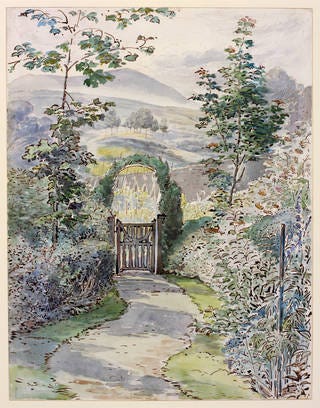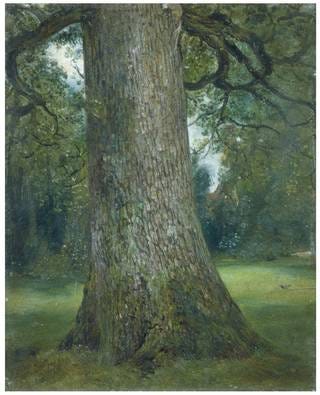A cottage near the woods. A crackling fireplace. A herb garden. A slower, more purposeful and serene life. Many of us have a clear image of this aesthetics thanks to artists like Paula Merril, The Cottage Fairy, who decided to embrace cottagecore and bring it to the screen for us poor sinners to marvel at.
Cottagecore has often been criticised for its (apparent) performativity. Many think this lifestyle is only available for the lucky few who can relocate to an idyllic cottage, and indulge in rural and earthly pleasures until the cows come home. Rural pun intended.
Looking at its portrayal on social media makes viewers think that devoting all their time to activities such as gardening, crafting, foraging, baking and taking long leisurely walks in forests and fields appear to be mandatory components of this lifestyle. A conditio sine qua non for its successful application to their lives.
Goes without saying, not everyone shares the same means and circumstances. As a result, cottagecore might come across as rather exclusive, and even elitist at times.
I propose a more moderate, inclusive, and ecocentric approach to this aesthetic. A closer look at it will show that behind its initial layer of performativity, cottagecore promotes universally relatable values such as slow living, nature, tradition, community, and creativity.
A more adaptable version of it can thus work not only as a vehicle for beauty but also as a more sustainable and mindful approach towards life, independently from our current living circumstances.
The Concept of Cottagecore (and its limitations)
cottagecore [ kot-ij-kawr ]: an aesthetic or imagery inspired by an old-fashioned, rural lifestyle, characterized by rustic décor and fashion, a revival of traditional handicrafts, etc.
Cottagecore is a set of principles, values and stylistic preferences that create a system of cultural significance. They manifest in different areas of life and promote a vibe that belongs to the stories written by Beatrix Potter, and the paintings of John Constable, amongst many others.

Cottagecore in popular culture swiftly became a synonym for romanticized, rural living. People adhering to it are seen devoting their existence to a slower pace of living, and a more mindful approach to food, music, clothing, home decor and many other aspects of life. All of this while surrounded by the opulent presence of nature.

Having spent my childhood in a similar setting (before it was cool), I have always been drawn towards the visuals and values of this aesthetic. At the same time, in my early twenties, I found myself agreeing with the claim that cottagecore developed into a self-indulgent, romanticised and sadly shallow version of rural life.
A self-contained phenomenon. A privileged fairytale. A dream only available to a handful of lucky people armed with pastel spring dresses and woven baskets. Nothing but nostalgic screen content for me to consume while eating instant ramen, in the urban comfort of my shared student apartment.
Now in my late twenties, I've found out that many cottagecore aficionados feel the same way though they are similarly cottageless. This made me realize that the appeal of cottagecore is dependent on its more subtle and easily relatable core values, rather than on its visually pleasing appearance alone.
When observing the lifestyle that stems from this aesthetic, one can easily see that it promotes deeply ecocentric and low-maintenance values such as:
a slower pace of life, a deeper commute with nature, and special attention to tradition, community, and the home as a sacred and meaningful space.
While some social media portrayals of this lifestyle can match criticism related to escapism, nostalgia, privilege, and romanticised rural settings, the values of cottagecore are nothing but an interesting blueprint of what it means to live more sustainably.
Towards Urban Cottagecore
This moderate and inclusive approach to cottagecore needed its own name. Thus, in an attempt to merge a wide variety of living conditions, with the values that cottagecore brings, I have borrowed a term sparsely used on social media: urban cottagecore. Admittedly, it's quite catchy.
This article highlights the potential of urban cottagecore, as a more inclusive and adaptable application of sustainable cultural aesthetics to the masses. By implementing some simple core values in their lives, every single reader can approach this lifestyle without having to move to Elisabeth Bennet's house overnight.
Urban cottagecore is the liminal space where mindful, natural living marries a variety of human settlements and the less-than-bucolic complexities of life on our planet.
My Journey Towards Urban Cottagecore
While this article is not about me, giving readers some context could help them understand the potential of this cultural phenomenon. I'm Italian, 29 years old, I've lived in several European countries in the last decade, and I'm now completing a PhD on the concept of homeliness in times of climate change. Cottagecore pretty much is my academic field.
I'm a writer, a podcaster, and a certified coach who believes that the places we live in are interdependent with who we are — and who we can be as a species. Ecocentrism, homeliness, identity, and sustainability are not only my career. They are my passion, my true north, and the core topic of my podcast and newsletter.
I'm about to move from Portugal to my hometown, a city of 200K people on the Adriatic Sea. For about a year now, I've been looking to buy my first house. The initial idea was for my partner and I to live somewhere remote, far away from any human settlement, possibly close to a forest. For a while, I went full cottagecore.
Then, I had the reassess what I truly wanted because of a major change: my partner won't be joining me right away because of work. And while our long-term goal is still to settle somewhere natural, peaceful, and remote, we don't know how long it will take before we'll be able to live together regularly again.
After years of happy co-living, I will live completely alone, for an indefinite amount of time. Because of this fundamental change, I realized that I needed a more gradual and moderate approach to cottagecore's traditional requirements.
As a happy introvert, I would have enjoyed a more remote location, I'm sure. On the other hand, I realized that with my partner gone for a while, my twenties coming to an end, and a change of scenery, I will need people around me. I will need friends within walking distance, and the diverse web of things and beings that create my hometown environment.
A diverse safety net to jump into whenever needed, and without the need for a long drive. I need community. I need moderate, urban cottagecore.
My ideal home started taking shape in my head after this bittersweet realization. My mind wove a different picture from a blurry image of a country house. A compact apartment, with a little attic used as a bedroom, big, happy windows, and a terrace where I could grow plants and watch the sunset. A place where being alone feels cozy, empowering and healing, instead of unsettling, lonely, and isolated.
Suddenly I realized, shockingly enough, that cottagecore is not really about the cottage. It's about nurturing its core values regardless of the space we are comfortable to occupy at the moment.
A moderate and personalized approach towards this lifestyle could help you integrate more sustainable habits into your current circumstances, instead of waiting for the right time to move to Zeniba's neighborhood.
In Conclusion (and the next steps)
The core values of cottagecore are sustainability, connection to nature, simple living, community, creativity, comfort, tradition and self-sufficiency. All of these values can be honoured in any type of dwelling, including apartments, student housing, and your friend's couch.
Initially, I wanted to include every aspect of urban cottagecore within one article. As I was writing it, though, I realized there's much more to it than I initially thought.
Because of this, I will write about every core aspect of urban cottagecore separately, to give you more in-depth articles, where I offer a mix of practical advice and multidisciplinary insights on the matter.
In each article, you will find some key takeaways, practical tips, and best practices, all contextualized within the experience of someone starting this journey with you. Empirical experience merged with academic training, what else do you want?
I believe that a more moderate and adaptable, even eclectic approach to aesthetics can be a great way to implement teachings, values, and sustainability into our lives, regardless of where we are starting from.
Thank you for reading this article, I hope you enjoyed it, and I hope it made you go "Hah, that's interesting!" or something of the sort.
If you are drawn towards themes of homeliness, identity, and sustainability in times of climate change, consider joining my newsletter. I hope to see you there.


